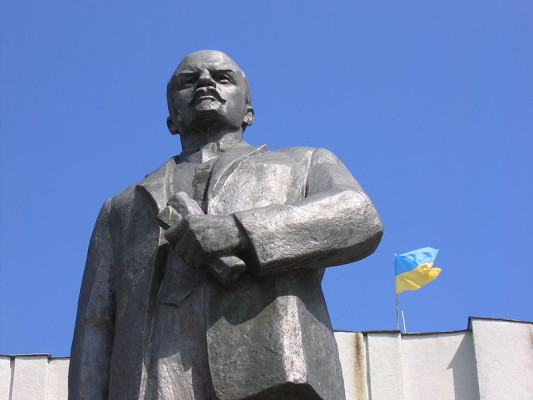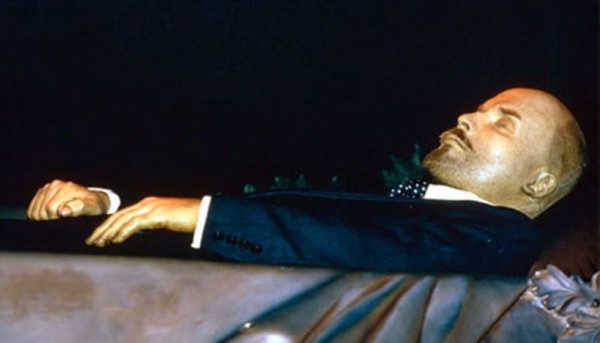Perhaps the most influential figure in the modern Russian history, Vladimir Lenin helped shape the history of Soviet Union since the dawn of the twentieth century. His body has been preserved since his death in 1924, and there is no other example of such elaborate preservation of any historic figure. Despite the fact that most of his decaying skin has been replaced by plastic like material and there is less of him on display these days, Lenin’s body is still the source of inspiration for many Russians who see him as a symbol of modern Russian identity.
The preservation team looking after Lenin’s embalmed body is always busy and has a very ‘noble’ task to keep his body life-like. The goal is to make sure the body is preserved in terms of the look and feel, regardless of the material or chemical they may have to use. As far as the original biological form of Lenin is concerned there is less of that in his embalmed figure, however there is plenty of plastics and other replacement material that make up most of his skin these days.
A lot of people look at Lenin’s preserved body as a modern form of mummification; however experts suggest that it is anything but. The process of mummification was based around this simple philosophy that the original person must be preserved i.e. the biological person, hence the material was used to preserve the biology of deceased. However in case of Lenin’s body the whole focus is on the preservation of figure, shape and look rather than actual biological material that belonged to Lenin. The preservation team have now replaced Lenin’s eyelashes with a fake set, and in order to compensate for lost face fat they had to induce the skin with specially made chemicals and material to keep the glowing look alive. (Fox News)
Unlike another mummified figure in history, maintaining Lenin’s embalmed body is a significantly large task for Russian scientists. During the height of cold war, the importance of maintaining the national identity of Soviet Union was touching the skies, hence Lenin’s body received special attention from the leaders of the country. From 1950 to late 1980’s more than 200 scientists had the job of making sure Lenin’s body was maintained in all its glory.
In the light of recent developments in Crimea, the debate about the Russian identity and its dream of being a major player in the international arena is once again coming to life. After unlawfully annexing Crimean peninsula from Ukraine, Russia has lost its respect in the eyes of its immediate neighbours as well as the wider western world. Just recently two statues of Lenin were knocked down in Ukraine as a protest against Russia’s aggression in Crimea.

Lenin died on January 21, 1924. Two days later architect Aleksey Shchusev was charged with building a structure suitable for viewing of the body by mourners. A wooden tomb, in Red Square by the Kremlin wall, was ready January 27, and later that day Lenin’s coffin was placed in it. More than 100,000[citation needed] people visited the tomb in the next six weeks. By August 1924, Shchusev had replaced the tomb with a larger one, and Lenin’s body transferred to a sarcophagus designed by architect Konstantin Melnikov.
Pathologist Alexei Ivanovich Abrikosov had embalmed the body shortly before Lenin’s death, but by 1929 it was determined that it would be possible to preserve the body for much longer than usual; therefore, the next year a new mausoleum of marble, porphyry, granite, andlabradorite (by Alexey Shchusev, I.A. Frantsuz and G.K. Yakovlev) was completed.
In 1973 sculptor Nikolai Tomsky designed a new sarcophagus.
On January 26, 1924, the Head of the Moscow Garrison issued an order to place the Guard of Honour at the mausoleum. Russians call it the “Number One Sentry”. After the events of the Russian constitutional crisis of 1993, the Guard of Honour was disbanded. In 1997 the “Number One Sentry” was restored at theTomb of the Unknown Soldier in Alexander Garden.
The body was removed in October 1941 and evacuated to Tyumen, in Siberia, when it appeared that Moscow might be in danger of capture by German troops. After the war, it was returned and the tomb reopened. More than 10 million people visited Lenin’s tomb between 1924 and 1972. Joseph Stalin’s embalmed body shared a spot next to Lenin’s, from the time of his death in 1953 until October 31, 1961, when Stalin was removed as part of de-Stalinization andKhrushchev’s Thaw, and buried in the Kremlin Wall Necropolis outside the walls of the Kremlin. Lenin’s body was to have been transferred to the Pantheon upon its completion but the project was cancelled in the aftermath of de-Stalinization.
Lead image credit

